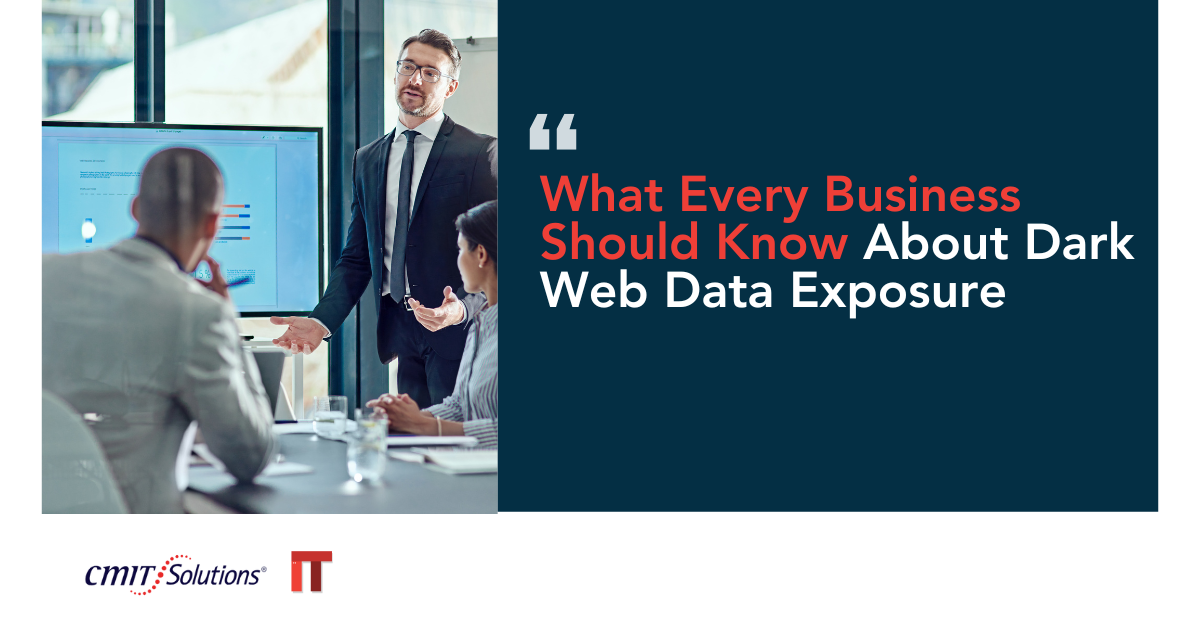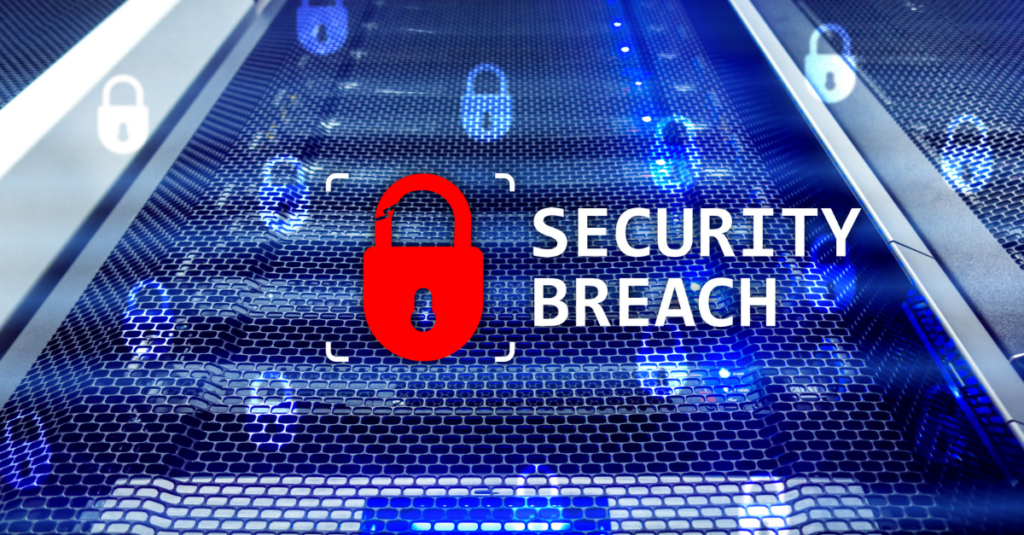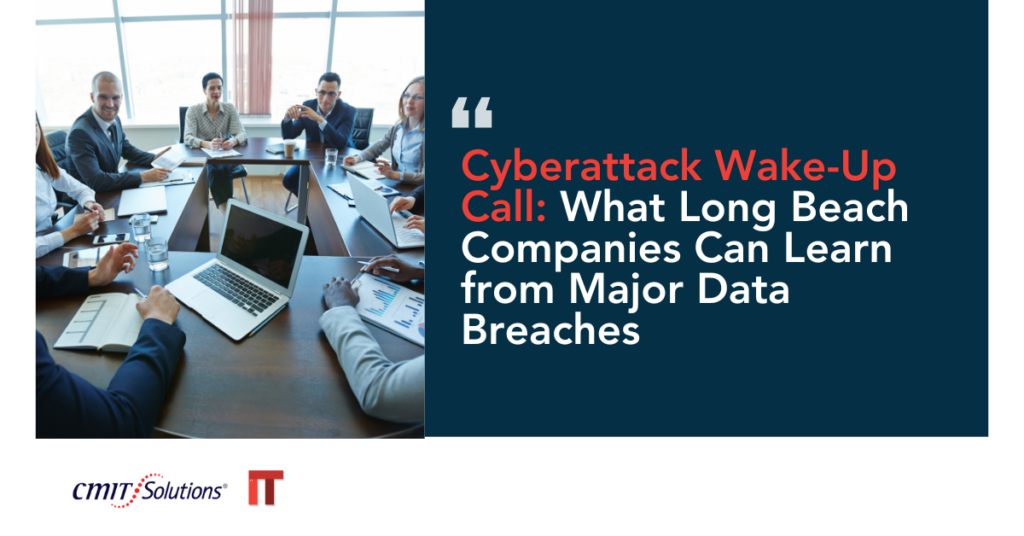Introduction: The Dark Web is Not Just for Cybercrime Mythology
In the digital age, the “dark web” has taken on an almost mythical presence—an ominous corner of the internet often associated with illegal activity. While it is indeed a haven for illicit transactions, it is also a critical risk zone for businesses. When your data is exposed and lands on the dark web, the consequences can be severe: identity theft, financial fraud, business disruption, and long-term reputational damage.
Whether it’s login credentials, customer records, or intellectual property, once sensitive information is leaked, it’s quickly bought, sold, or traded in underground marketplaces. Yet many small and mid-sized businesses (SMBs) remain unaware that their data might already be circulating. The lack of visibility into the dark web leaves organizations exposed to threats that could otherwise be mitigated with proactive strategy and monitoring. This blog will help you understand what dark web data exposure is, why it matters, and how businesses can detect, prevent, and respond to it effectively.
What is Dark Web Data Exposure?
Dark web data exposure refers to the unauthorized release of your business’s sensitive information into parts of the internet that are not indexed by search engines. This includes login credentials, financial details, confidential communications, and internal documents. What makes the dark web particularly dangerous is its anonymity and unregulated nature, which allow cybercriminals to buy, sell, and trade this information without fear of accountability.
Once on the dark web, this data becomes a commodity—often sold in bulk or traded in data dumps among hackers and criminal groups. Attackers can use it to orchestrate phishing campaigns, commit fraud, or launch more sophisticated cyberattacks like ransomware. Moreover, leaked data from one organization may be used to target its vendors, clients, or partners, making the ripple effects far-reaching and difficult to contain.
Businesses often first learn of dark web exposure not through an alert or audit, but after a breach has already occurred—sometimes weeks or months later. That delay can be devastating, allowing criminals ample time to exploit the information.
How Does Business Data End Up on the Dark Web?
There are several pathways for data to reach the dark web:
- Phishing Attacks: Employees unknowingly click malicious links or enter credentials into fake login pages, giving hackers direct access.
- Weak Passwords: Easily guessable or reused passwords are cracked using brute force or credential stuffing techniques, especially if the same password is used across multiple platforms.
- Endpoint Vulnerabilities: Unsecured devices are exploited through malware, remote access tools, or outdated software. Endpoint security solutions are crucial here to monitor and protect every device.
- Third-Party Breaches: Vendors or SaaS platforms with poor security posture are compromised, leaking customer data to the dark web.
As explained in Cyberattack Wake-Up Call, breaches are often the result of simple but overlooked security flaws. Even something as minor as an employee accidentally sharing information via unsecured channels can snowball into a crisis.
Signs Your Business May Be Compromised
Many SMBs miss the early warning signs of dark web exposure. These red flags include:
- Unexplained login attempts or password resets that point to credential compromise
- Locked-out employee accounts due to unauthorized access attempts
- Customer complaints about fraud, unauthorized transactions, or strange communications
- Spam or phishing emails sent from company addresses, suggesting hijacked accounts
Businesses should also monitor user behavior for anomalies, such as unusual login times, locations, or devices. Tools such as network monitoring solutions and centralized endpoint security can detect anomalies and trigger alerts before these symptoms evolve into full-blown attacks.
The Business Impact of a Dark Web Breach
When business data is sold or leaked on the dark web, the damage can be both immediate and long-lasting:
- Reputational harm that erodes customer trust, particularly if clients learn about the breach through media rather than from the business itself.
- Financial losses from fraud, ransom payments, legal fees, or operational disruptions. Regulatory fines from GDPR, HIPAA, or PCI-DSS non-compliance can add to the burden.
- Regulatory fines due to compliance failures, especially for sensitive sectors like healthcare, finance, and education.
- Operational downtime that disrupts services, halts productivity, and causes customer dissatisfaction.
The effects are compounded for industries like healthcare and finance that are held to strict compliance standards. Learn more in HIPAA and Beyond. Recovery may take months, and some businesses never fully regain their pre-breach performance.
Proactive Detection: How to Know If Your Data is Exposed
You can’t protect what you can’t see. Businesses need tools that scan dark web marketplaces and forums for exposed credentials and compromised data. These monitoring solutions provide real-time alerts when company assets are identified in breaches, giving teams time to respond before further exploitation occurs.
Proactive monitoring includes:
- Checking known breach databases and leak repositories
- Alerting administrators when new mentions of your company appear on hacker forums
- Automatically flagging compromised credentials and recommending password resets
Managed Service Providers (MSPs) often include dark web monitoring as part of their cybersecurity stack. This allows businesses to stay one step ahead of attackers by changing credentials, notifying customers, and containing damage before escalation. Explore the benefits in Cybersecurity Without Compromise.
Strengthening Authentication and Access Controls
Once an attacker gains access to a single credential, they often try to penetrate multiple systems. That’s why a strong identity management strategy is critical. Moving from passwords to passkeys, enforcing multi-factor authentication (MFA), and adopting zero-trust architecture all reduce the risk of exploitation.
Businesses should:
- Avoid default or shared credentials
- Enforce complex password policies with expiration schedules
- Require MFA for all logins, especially for remote or privileged users
- Monitor login attempts and behavior patterns
Passkeys vs Passwords explains why traditional login methods are becoming obsolete, and why more SMBs are upgrading their authentication strategies.
How AI Can Help Identify and Stop Threats
Artificial Intelligence (AI) is transforming cybersecurity by automating threat detection and correlating patterns across devices, networks, and user behaviors. When combined with dark web monitoring, AI enhances visibility and response speed.
Key AI applications in cybersecurity include:
- Real-time behavioral analysis that flags unusual activity
- Predictive analytics that assess risk based on emerging patterns
- Smart prioritization that filters low-risk alerts and elevates high-priority ones
As discussed in AI Security for Long Beach Businesses, AI doesn’t replace human experts, but it enables faster and more accurate defense strategies. It also reduces alert fatigue by filtering low-priority threats and prioritizing high-risk incidents.
Backups and Recovery: Preparing for the Worst
Even with strong prevention, breaches can happen. A reliable backup strategy ensures your data can be restored if compromised. Cloud-based, encrypted, and frequently tested backups are essential for resilience.
An effective recovery plan should include:
- Daily or hourly automated backups of critical systems
- Encryption to protect backup data from tampering
- Offline or air-gapped backup copies
- Regular testing to verify recovery speed and completeness
Learn why Cloud Backups Are Essential and how to build a recovery plan that minimizes downtime. Also, explore ransomware resilience tactics that support data continuity.
Managed IT Support: Your Frontline Defense
Partnering with a Managed Service Provider (MSP) equips your business with expert resources and continuous monitoring. MSPs provide endpoint protection, compliance support, dark web scanning, and more—all of which reduce the likelihood of exposure.
MSPs also deliver:
- Threat intelligence curated from multiple global sources
- 24/7 SOC (Security Operations Center) monitoring
- Regular patching, vulnerability assessments, and employee training
Find out how Transforming IT Support and proactive IT strategies can fortify your operations against dark web threats and ensure peace of mind.
Conclusion: Awareness, Action, and Resilience
Dark web data exposure isn’t just an IT issue—it’s a business risk that affects every department. In a world where breaches are inevitable, your best defense is early detection, layered security, and a rapid response strategy.
By combining AI-powered tools, strong authentication, reliable backups, and expert support, your business can stay ahead of cybercriminals and avoid becoming tomorrow’s headline. Empower your team with knowledge, equip your systems with modern protections, and partner with trusted experts who understand how to secure your future.
Start protecting your digital identity today with help from CMIT Solutions of Long Beach, your trusted partner in proactive cybersecurity.




